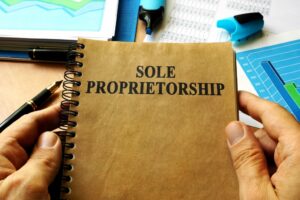
The salvage value is the estimated value of an asset at the end of its useful life, which can be sold or scrapped. after tax salvage value formula This way, the salvage value helps in determining the depreciation; which is an integral part of accounting. So, total depreciation of $45,000 spread across 15 years of useful life gives annual depreciation of $3,000 per year. 60% depreciation is reported over 6 years and salvage value is 40% of the initial cost of the car. As is clear from the definition, the value of equipment or machinery after its useful life is termed the salvage value. Simply put, when we deduct the depreciation of the machinery from its original cost, we get the salvage value.
- Salvage value is also called scrap value and gives us the annual depreciation expense of a specific asset.
- Both declining balance and DDB methods need the company to set an initial salvage value.
- The salvage value calculator evaluates the salvage value of an asset on the basis of the depreciation rate and the number of years.
- To estimate salvage value, a company can use the percentage of the original cost method or get an independent appraisal.
- Net book value can be very helpful in evaluating a company’s profits or losses over a given time period.
Practical Example: ATSV in Capital Budgeting
- Other times, it’s about figuring out how much it’s worth when it’s done for good, minus the cost of getting rid of it.
- This is often the case with low-cost assets such as office supplies or furniture.
- Unlock the secrets of the APR formula and learn how it impacts your finances, including interest rates, fees, and loan costs, in this expert guide.
- The choice of method depends on the nature of the asset and its expected pattern of use and obsolescence.
- Companies can sell these parts or scrap to recover some of the asset’s value, thus reducing the overall cost of ownership.
- When calculating depreciation, you subtract the salvage value from the initial cost.
By the end of the PP&E’s useful life, the ending balance should be equal to our $200k assumption – which our PP&E schedule below confirms. The beginning balance of the PP&E is $1 million in Year 1, which is subsequently reduced by $160k each period until the end of Year 5.

Mastering the APR Formula: Financial Impact Explained
- When a company purchases an asset, first, it calculates the salvage value of the asset.
- This is especially important for assets that are used extensively, such as construction equipment or vehicles.
- It is important to set an initial salvage value, which represents the estimated value of the asset at the end of its useful life.
- Terminal cash flow is a critical concept in financial modeling, representing the net cash flow that a project generates at the conclusion of its forecast period.
- A tax rate of 30% is applicable to both income and gains and is not expected to change in 5 years.
- NRV is also used to account for costs when two products are produced together in a joint costing system until the products reach a split-off point.
This value can be a barometer of the machine’s resale value, but the selling price is ultimately determined by the buyer. Accumulated depreciation is the total amount of depreciation taken during the asset’s class life. You must subtract this from the basis cost to avoid “double-dipping” on tax deductions, as per the IRS. To determine the estimated remaining useful life of gross vs net an asset, research market examples of similar assets.
The after-tax Salvage Value is calculated as: SV – t*(SV-BV)
Variable declining balance method might be used instead if the declining balance method does not fully depreciate an asset by the end of its life. If capital spending – i.e. the change in the net fixed asset balance across a period – is equal to the depreciation expense, then the net capital spending is zero. Past resale values and depreciation patterns can offer guidance on estimating salvage value. This is because historical data on similar assets can be analyzed to forecast future salvage values. The annual depreciation can be calculated by subtracting the residual value from the PP&E purchase price and dividing that amount by the useful life assumption. For instance, if the PP&E purchase price is $1 million, the salvage value is $200k, and the useful life assumption is 5 years, the annual depreciation would be $160k.

How to Calculate Deferred Revenue for Your Business Easily

Industry benchmarks and standards provide reference points for estimating salvage value. Scrap Value is a projected value of an asset that can’t be used any longer for original purposes. We can see this example to calculate salvage value and record depreciation in accounts. Moving on, let’s look through the details of how the salvage value can be used in depreciation calculations.
How to Calculate Salvage Value?

It’s essential to consider the life cycle of an asset when deciding whether to ignore depreciation in business computing. You must report any changes in salvage value to the IRS, as it may affect the https://www.bookstime.com/ amount of depreciation you can claim. If an asset has joint personal and business use, you can only depreciate the business use percentage of the asset. There are some exceptions to the general rule, including intangible assets, equipment for capital improvements, and temporary assets.
Salvage Value Depreciation Equation
Understanding the CSED helps taxpayers manage obligations and avoid prolonged collection actions. Salvage value and depreciation are both accounting concepts that are related to the value of an asset over its useful life. Hence, a car with even a couple of miles driven on it tends to lose a significant percentage of its initial value the moment it becomes a “used” car.
